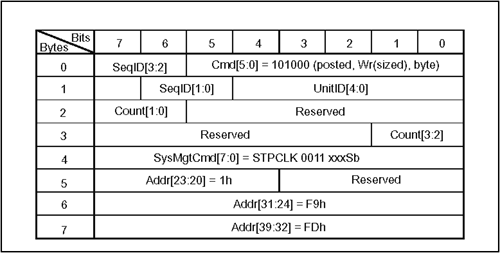X86 Power Management Support
| X86 power management is based on the ACPI specification for the Windows operation environment. The specification defines specific timing requirements associated with STPCLK and SMI message cycles related to power management events. The specification also describes ACPI-defined system state transitions that relate to wakeup event signaling via LDTREQ#. See the specification for reference information related to these events. Stop Clock SignalThe STPCLK# is one of the basic x86 power management signals. When power management logic asserts this signal, it places the CPU into its Stop Grant State, which has the following effects (Intel PIII example). The processor:
When STPCLK# is deasserted, the CPU returns to the Normal State. Many newer CPU's have an additional signal which may be used to expand the number of low power states. For example, the Intel Pentium III has a SLP# (Sleep) signal used in conjunction with STPCLK# to drive the CPU into a very deep low power state (e.g., clocks are stopped , no interrupts are recognized, and no snoops are performed). This is the next best thing to being powered down completely, and the time to recover to normal operation is much faster. HT Method of STPCLK# SignalingAs described in Chapter 9, STPCLK is signaled by the System Management Controller. The SM Request packet content that defines STPCLK is illustrated in Figure 18-4 on page 442. Note that the lower nibble of the SysMgtCmd defines the SMAF (System Management Action Field). Bit 0 of this field (labeled "S" for state) defines the new state of STPCLK# signal. Bits [3:1] define the power management action to be taken in association with STPCLK. Figure 18-4. SM Request Packet Contents for Delivering STPCLK |
EAN: 2147483647
Pages: 182
- Article 314 Outlet, Device, Pull, and Junction Boxes; Conduit Bodies; Fittings; and Handhole Enclosures
- Article 330 Metal-Clad Cable Type MC
- Article 336 Power and Control Tray Cable Type TC
- Article 348 Flexible Metal Conduit Type FMC
- Example No. D5(b) Optional Calculation for Multifamily Dwelling Served at 208Y/120 Volts, Three Phase
